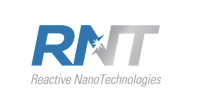Home > Press > RNT Develops Ruthenium Sputter Target Bonding Method
 |
Abstract:
Reactive NanoTechnologies, Inc. (RNT), developer and manufacturer of its patented NanoFoil®, announced that it has developed a bonding solution using NanoBond® for ruthenium (Ru) sputtering targets bonded to metal backing plates that does not require the use of backside metallization (BSM). Ruthenium is a technology enabler for what is known as perpendicular recording in hard disk drives, allowing more bits of information to be recorded in a smaller space, thus increasing storage capacity.
RNT Develops Ruthenium Sputter Target Bonding Method
HUNT VALLEY, MD | Posted on April 15th, 2009Traditional indium reflow bonding of Ru sputtering targets to metal backing plates requires the use of BSM. BSM of the bonding face of a Ru target is usually achieved by sputter deposition of a multilayer coating that acts as a diffusion barrier between the Ru and the indium solder and also enhances adhesion of indium solder. BSM thus represents an extra processing step that can add to lead time and increase costs for sputter target bonding.
The NanoBond® process of sputtering targets uses NanoFoil® to provide a localized heat source that reflows pre-applied solder layers on the target and the backing plate. Since the heat is localized to the solder layers, the target and backing plate are bonded at room temperature. This in turn allows NanoBond® to be compatible with tin (Sn) based solders that have significantly higher melting temperatures compared to indium. Sn can be applied directly to the bonding surface of Ru targets with the aid of acid flux.
RNT has conducted aging studies demonstrating that there is no significant diffusion of Sn into Ru. The diffusion distance of Sn into Ru after aging at 100ºC for 120 hours, is less than 2 µm. The integrity of the bond was confirmed with ultrasonic scanning and strength testing. Bond coverage was measured to be 99 % and shear strength of 27 MPa was measured with failure occurring exclusively in the Sn solder.
"The NanoBond® process is robust in that has different benefits for different materials," stated RNT's Global Vice President of Sales, Mike O'Neill. "The ability to eliminate the need for a back side metallization is another instance where NanoBond® can simplify the sputter target bonding process."
####
About Reactive NanoTechnologies, Inc. (RNT)
Headquartered in Hunt Valley, Maryland, Reactive NanoTechnologies, Inc. (RNT) was founded in 2001 to develop and manufacture its patented technology, NanoFoil®.
NanoFoil® is used to precisely control the instantaneous release of heat energy for advanced joining applications providing superior performance and value to the user. The company has also developed its patented NanoBond® joining process to simplify manufacturing and ensure the benefits of NanoFoil® are maximized. NanoBond® is used today to bond sputter targets and in several electronics assembly applications including LED assembly and thermal management. Mass production of NanoFoil® is taking place from RNT’s onsite manufacturing facilities, supported by a worldwide sales, applications support, and distribution network. RNT continues to expand its customer base and has entered into licensing agreements with a number of Fortune 500 Companies. Its breakthrough technology has also earned several prestigious awards including the 2005 “R&D 100” from R&D Magazine, the 2005 Nano 50™ from NASA Nanotech Briefs Magazine and recognition in The National Nanotechnology Initiative Strategic Plan in December 2004.
For more information, please click here
Contacts:
Reactive NanoTechnologies, Inc.
180 Lake Front Drive
Hunt Valley, MD 21030
Phone: 410-771-9801
Fax: 410-771-0586
Copyright © Reactive NanoTechnologies, Inc. (RNT)
If you have a comment, please Contact us.Issuers of news releases, not 7th Wave, Inc. or Nanotechnology Now, are solely responsible for the accuracy of the content.
| Related News Press |
News and information
![]() Researchers develop molecular qubits that communicate at telecom frequencies October 3rd, 2025
Researchers develop molecular qubits that communicate at telecom frequencies October 3rd, 2025
![]() Next-generation quantum communication October 3rd, 2025
Next-generation quantum communication October 3rd, 2025
![]() "Nanoreactor" cage uses visible light for catalytic and ultra-selective cross-cycloadditions October 3rd, 2025
"Nanoreactor" cage uses visible light for catalytic and ultra-selective cross-cycloadditions October 3rd, 2025
Memory Technology
![]() Researchers tackle the memory bottleneck stalling quantum computing October 3rd, 2025
Researchers tackle the memory bottleneck stalling quantum computing October 3rd, 2025
![]() First real-time observation of two-dimensional melting process: Researchers at Mainz University unveil new insights into magnetic vortex structures August 8th, 2025
First real-time observation of two-dimensional melting process: Researchers at Mainz University unveil new insights into magnetic vortex structures August 8th, 2025
![]() Utilizing palladium for addressing contact issues of buried oxide thin film transistors April 5th, 2024
Utilizing palladium for addressing contact issues of buried oxide thin film transistors April 5th, 2024
Announcements
![]() Rice membrane extracts lithium from brines with greater speed, less waste October 3rd, 2025
Rice membrane extracts lithium from brines with greater speed, less waste October 3rd, 2025
![]() Researchers develop molecular qubits that communicate at telecom frequencies October 3rd, 2025
Researchers develop molecular qubits that communicate at telecom frequencies October 3rd, 2025
![]() Next-generation quantum communication October 3rd, 2025
Next-generation quantum communication October 3rd, 2025
![]() "Nanoreactor" cage uses visible light for catalytic and ultra-selective cross-cycloadditions October 3rd, 2025
"Nanoreactor" cage uses visible light for catalytic and ultra-selective cross-cycloadditions October 3rd, 2025
|
|
||
|
|
||
| The latest news from around the world, FREE | ||
|
|
||
|
|
||
| Premium Products | ||
|
|
||
|
Only the news you want to read!
Learn More |
||
|
|
||
|
Full-service, expert consulting
Learn More |
||
|
|
||








